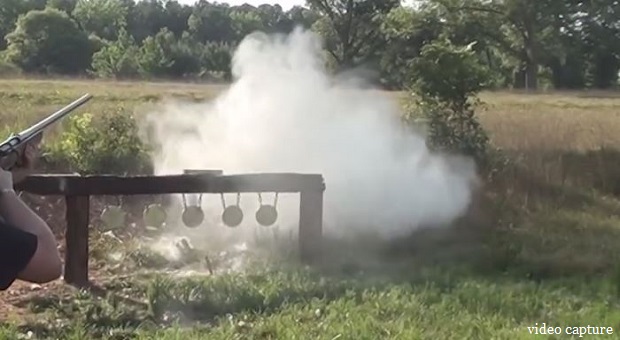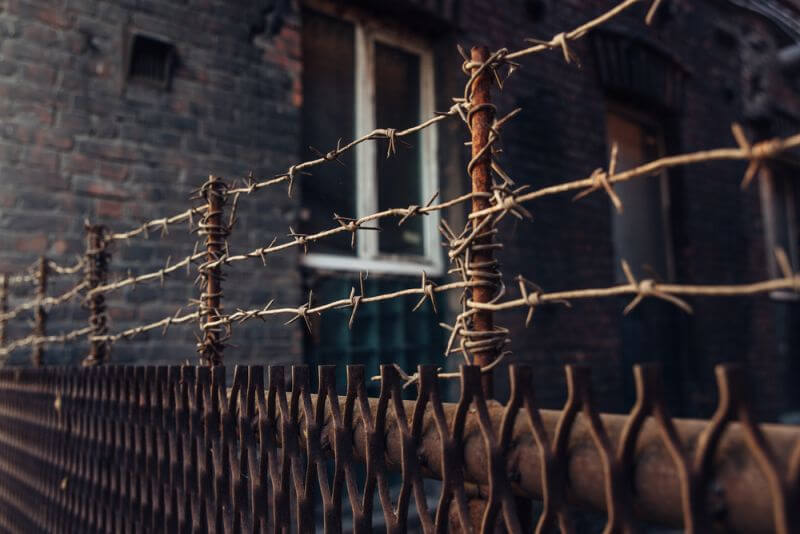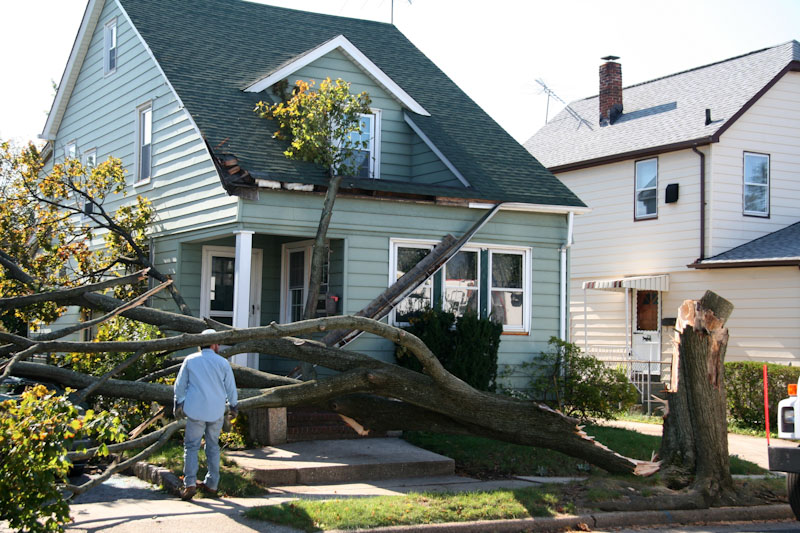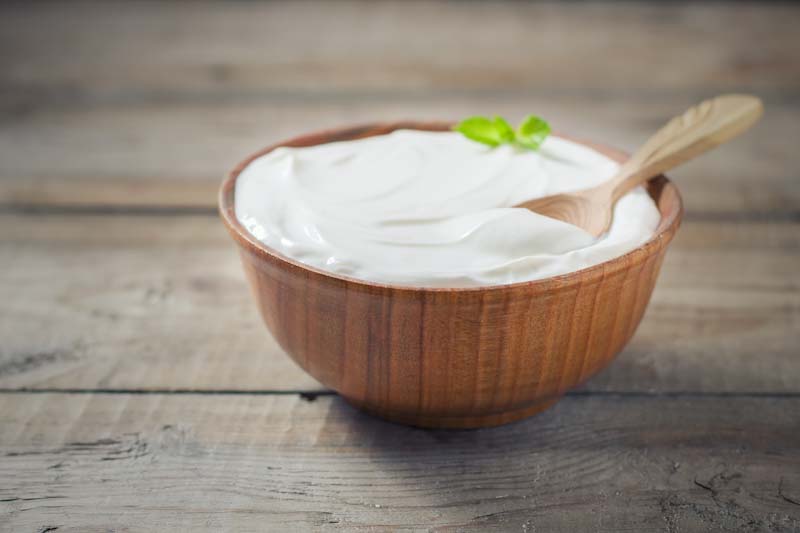While making artisanal bombs at home may end up in a visit from your local FBI office, with agents Scully and Mulder asking you weird questions about your internet surfing habits, mastering the dark arts of home-made explosives might come pretty handy at some strange moment in one’s life; I mean, who knows what the future brings?
Life is stranger than fiction and maybe someday you’ll be required to blow stuff up for the resistance, or to plant some mines on your survival corn field, waiting for those pesky scavengers to trip on your traps and get lit up like on the 4th of July.
Joke aside, it’s pretty easy to make artisanal flour bombs for your home defense, provided you know your chemistry. Let’s see the magic of it!
If you’ve seen that awesome movie about anarchy as an ideology, you’re probably aware of the fact that if you know how to make soap at home, you’re a certified chemist. And to make soap, you must first render fat. The thing is, with enough soap, you can basically blow up just about anything.
Click here to get your guide to a layered survival defense!
If you have the recipe for home-made soap, take a load of this: once the tallow hardens, you can skim off a layer of glycerin. If you add to that some nitric acid, you got, well, basically nitroglycerin, check out that bad boy. If you add some sodium nitrate and a pinch of sawdust, you’ll be as smart as Alfred Nobel. You know, the dude who invented dynamite.
But enough of this already.
How Dust Explosions Work
Today we’ll concentrate on more benign stuff, something called dust explosions.
If you are wondering what I am talking about, a dust explosion (the rapid combustion of particles which are suspended in the air) occurs when a dispersed powdered combustible material (flour, powdered sugar, , coal dust or whatever) is present in high enough concentration in an oxygen (or other oxidizing gaseous medium) rich environment.
Dust explosions happen due to the fact that compared to their mass, dusts have a huge surface area and burning only occurs at the surface of a liquid/solid, where the reaction with oxygen takes place, thus dust is way more flammable than bulk stuff.
Dust explosions are very dangerous, especially in industrial environments, as they spontaneously appear in grain elevators and coal mines (due to coal dust).
Pyrotechnicians, filmmakers and special-effect artists are relying on dust explosions on a regular basis, due to their spectacular appearance and also the fact that dust explosions can be safely contained in a tightly controlled environment.
What you must know about dust explosions is that if they take place in a confined environment, they can cause massive damage and flying shrapnel due to the enormous overpressures that build up following the shockwave which occurs after the initial detonation. The shockwave will be produced anyway, both in open air or in a confined space.
How to Make a Flour Bomb
To create a dust explosion, you’ll require 4 things: a combustible dust, in our case flour and/or powdered sugar, a high enough concentration of the respective dust to be suspended in the air, an oxidant (in our case, the oxygen in the atmosphere) and finally, an ignition source.
The thing about flour is that it’s made up of starch mostly. Starch is a carbohydrate, which is a sort of sugar-molecule chained in a weird way (compared to regular sugar), and anyone who ever lit a marshmallow on fire is aware that sugar burns fairly easy. And obviously, the same principle applies to flour.
To begin with, here’s a flour and powdered sugar experiment, which results in cool outdoor explosions. These guys got their idea about experimenting with home-made explosives after hearing a story about a sugar factory which blew its roof off after a guy lit his cigarette inside.
There were so much sugar particles floating around in the air, that a flame occurred (via the cigarette), which caused a concussion that lifted the roof up and blew the windows out. So, keep in mind, these things (dust explosions) are very dangerous in confined spaces, i.e. always experiment with dust explosions outdoors.
For our first DIY dust-explosion project, you’ll require all purpose flour, powdered sugar, a flare and tannerite. Oh, and a 12 gauge shotgun (38 inch barrel), or at least that’s what these guys use. The end result is spectacular, but I won’t spoil it for you, just check out the video.
Video first seen on Iraqveteran8888.
The second experiment is more dangerous as it’s performed inside a home-made (improvised) chemistry lab (or so it appears).
This is basically a flour bomb demonstration, involving a paint can as a closed receptacle (it has the lid on, which makes for a confined space dust explosion), flour (the inflammable stuff for the dust explosion to occur), and a lit candle. Oh, and a pair of safety goggles.
The DIY job is as simple as it gets: the tin can must come with a relatively tight lid, and a hole must be drilled at the lowest point in the can’s side wall, large enough to fit a straw. In the next step, put a handful of flour inside the can and then place the lit candle inside.
Now it’s time to put your safety goggles on. Insert the straw in the can, close the lid and blow through the straw at the base of the can, so the flour stirs up inside, hopefully without extinguishing the candle.
Video first seen on kentchemistry.com.
This experiment is very neat for chemistry demonstrations regarding surface area reaction rates, but if you’re not paying attention and you’re a total amateur, you may end up with your ceiling requiring some repairs. Oh, and a very cool bang.
Unlike the guy in our experiment, don’t forget to put the goggles on, for safety reasons. Truth be told, these types of experiments should never be performed inside your house, as I already told you. Always play with fire outdoors, away from anything flammable.
Playing with chemicals is pretty dangerous stuff, but also massive fun if done nice and proper. Take care not to blow yourself up while preparing your home defense with these bombs!
I hope the article was as fun for you to read as it was for me to write. Feel free to comment if you have other ideas in the dedicated section below!
This article has been written by Chris Black for Survivopedia.
References:
https://en.wikipedia.org/wiki/Nitroglycerin
https://en.wikipedia.org/wiki/Tannerite









Bob L. | November 6, 2017
|
I learned about the danger of dust cloud explosions during the 1970’s from a training film at the company I worked at. It’s amazing how much damage can be done by common everyday powder form food items. I guess the EPA learned too, after a number of lives and several grain elevators were lost as a result of their mandate to shut down the ventilation fans to eliminate dust “pollution” of the outside atmosphere.
Sandra | November 6, 2017
|
Very interesting as I had no idea such common things could be used in this way. The reason I was interested in this post is that I just need to get rid of gophers in my back yard. I have heard of people shooting a gun into the holes, but I do not own a gun. Is there another way this would work for that?
Russell Palmer | November 6, 2017
|
Well, this is all pretty interesting. However, lets look at the first video, and see the reality of the extreme explosion we saw. that was not a shotgun he shot with, and he did not shoot at the upper place as he did with the firsts ones,which were mild if anything. so, exactly what did he use in the extreme explosion? perhaps some STYROFOAM melted with gas, in a container? lets be honest with these showings, ok?
also, why would a liberatatiun want to write about explosives made at home?
Drake Savage | November 6, 2017
|
I had a cool high school chemistry teacher named Mr.Bentley. He demonstrated dust explosions by drying corn starch in a dessicator, putting it in a straw, and blowing the dust into a flame. Really a great way to get young minds interested in chemistry.
Jason Smith | November 8, 2017
|
Very interesting. I had no idea that this even existed, and now I’M trying to determine if I’m GLAD i DO. What could this be useful for ? I think the dust cloud would make good cover in a bug out situation. Lets say your home was invaded and you needed to get out quick and under cover. This would come in handy, but would need to be planned and well executed to be effective. I wonder if there would be a way to make a grenade version. One could throw at intruders, to make their get away. Good idea, but drawbacks are premeditated preparation and the overall effectiveness. How long does the cloud last ? Is there enough time to escape ? Will the intruders have a defense ? After careful consideration I have decided it would not be worth the investment. Lot of work and little reward. If your playing around on the weekend this could be fun to show friends and family, but overall quite useless in my opinion., Thanks for the article and video. Very entertaining and well written.
http://knifearmory.ecrater.com/
YOSEMITE | February 12, 2018
|
look up tannerite. It is a binary explosive simple and safe to make the ingredients separately……..You Can also buy it. openly.
Tannerite is completely safe to handle until mixed…..Then it becomes shock sensitive..
mYTHBUSTERS AND OTHERS HAVE USED ITO N tv AND SOME OTHER THINGS TO ENHANCE THE EXPLOSION MAKING
ITI MORE SPECTACULAR…
DO not mix it until ready to use it then
place I it at least 100 yards / meters away.
Shoot it with a .223 Rem or 5.56 NATO. or a rifle with at least the same velocity or greater velocity
Thermite is also easy to make but it you must have a way to ignite it……… Just an fyi….
look THEM UP ON yOUTUBE…..BE EXTREMELY CAREFUL IF OU DECIDE TO MAKE IT AND ONLY
MAKE VERY SMALL AMOUNTS AT A TIME. follow ALL SAFET RULES WHEN DEALING WITH AN CHEMICALS
the do not teach HISHSCOOL CHEMISTRY LIKE THEY USE TO…………COULD GET PEOPLE SEVERELY INJURED OR KILLED
I DO NOT KNOW EXACTLY WHAT KIDS ARE USING TO MAKE THE SODA BOTTLE BOMBS……………BU
Mw | March 27, 2019
|
Well i think your just plum grooovy…. ☀